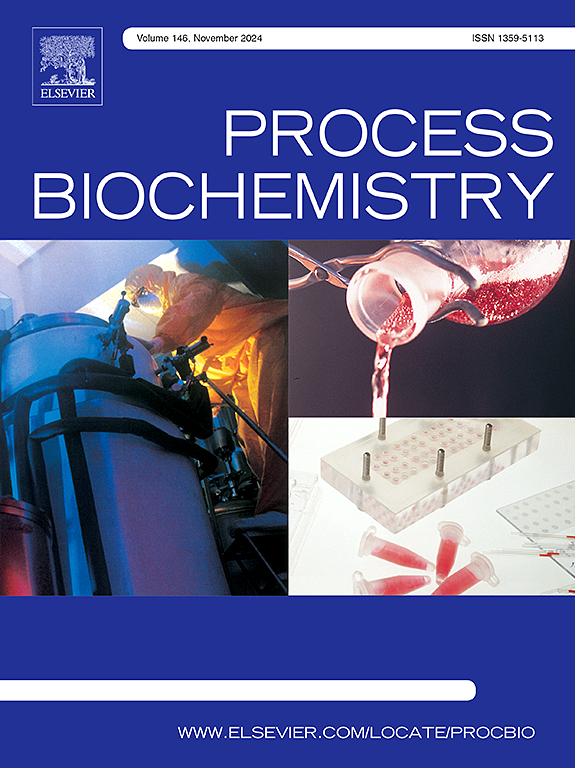Nutritional value and chemical properties of drone milk as a source of probiotics and evaluation of antioxidant effects on reproductive structures by in vitro test
IF 3.7
3区 生物学
Q2 BIOCHEMISTRY & MOLECULAR BIOLOGY
引用次数: 0
Abstract
The objective of this study was to compare the probiotic bacteria present in drone milk (DM) and drone larvae (DL). Furthermore, the study aimed to investigate the antibacterial capacity against Staphylococcus and Streptococcus species isolated from animal semen. The in vitro effects of DM and DL on male reproductive cells and rabbit tissues were examined. In addition, the nutritional and chemical composition of both bee products was investigated. Fresh and freeze-dried samples were used to isolate probiotic bacteria identified by MALDI-TOF MS Biotyper. Lactobacilli, especially Apilactobacillus kunkeii, Lactiplantibacillus pentosus, Lactiplantibacillus plantarum, and Secundilactobacillus malefermentas, received the highest identification scores. The best results were observed when targeting S. aureus, S. epidermidis, and S. vitulinus. The freeze-dried materials were tested on rabbit spermatozoa and testicular fragments to ascertain the effects of DM and DL. The results showed that the samples significantly reduced the amount of reactive oxygen species in the reproductive structures which resulted in a decrease in lipid peroxidation. Furthermore, testicular fragments treated in vitro with DM and DL produced considerably more testosterone and cholesterol; crude protein, nitrogenous compounds and fat were all present in higher amounts in DL while the content of reducing sugars was higher in DM.
蜂乳作为益生菌来源的营养价值、化学性质及体外抗氧化作用评价
本研究的目的是比较雄蜂乳(DM)和幼虫(DL)中存在的益生菌。此外,本研究旨在考察其对动物精液中葡萄球菌和链球菌的抑菌能力。研究了DM和DL对雄性生殖细胞和家兔组织的体外影响。此外,还对两种蜂产品的营养成分和化学成分进行了研究。用MALDI-TOF MS Biotyper对新鲜和冻干样品进行分离鉴定。乳酸菌,尤其是昆氏芽孢杆菌、戊酸乳杆菌、植物乳杆菌和恶臭次乳杆菌的鉴定分数最高。以金黄色葡萄球菌、表皮葡萄球菌和白蜡葡萄球菌为靶点,效果最好。用冻干材料对兔精子和睾丸碎片进行试验,以确定DM和DL的作用。结果表明,样品显著降低了生殖结构中活性氧的数量,导致脂质过氧化降低。此外,用DM和DL体外处理的睾丸碎片产生了更多的睾酮和胆固醇;粗蛋白质、氮化合物和脂肪在DL中含量较高,在DM中还原糖含量较高。
本文章由计算机程序翻译,如有差异,请以英文原文为准。
求助全文
约1分钟内获得全文
求助全文
来源期刊

Process Biochemistry
生物-工程:化工
CiteScore
8.30
自引率
4.50%
发文量
374
审稿时长
53 days
期刊介绍:
Process Biochemistry is an application-orientated research journal devoted to reporting advances with originality and novelty, in the science and technology of the processes involving bioactive molecules and living organisms. These processes concern the production of useful metabolites or materials, or the removal of toxic compounds using tools and methods of current biology and engineering. Its main areas of interest include novel bioprocesses and enabling technologies (such as nanobiotechnology, tissue engineering, directed evolution, metabolic engineering, systems biology, and synthetic biology) applicable in food (nutraceutical), healthcare (medical, pharmaceutical, cosmetic), energy (biofuels), environmental, and biorefinery industries and their underlying biological and engineering principles.
 求助内容:
求助内容: 应助结果提醒方式:
应助结果提醒方式:


